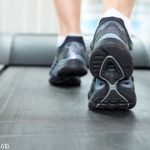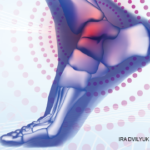Another panelist, Howard J. Hillstrom, PhD, said that the choice of the best shoe depends on multiple factors.
“Proper footwear will depend on the patient’s age, pathology, disease stage, and activity,” said Dr. Hillstrom, director of the Leon Root, M.D. Motion Analysis Laboratory at the Hospital for Special Surgery in New York, N.Y. “What’s good for one person may not be good for another.”
here may be adaptive changes going on related to [our arthritis patients’] longstanding foot pain that influence their disability.
—Smita Rao, PT, PhD
Foot Evaluation
Footwear should be part of the clinical evaluation of patients with foot pain, said Smita Rao, PT, PhD, assistant professor of physical therapy at New York University in New York City. The shoe fit, wear patterns, flexibility, and lacing all can contribute to or relieve foot symptoms, she said. For instance, her patients with midfoot osteoarthritis reportedly feel less discomfort when they lace their shoes in a way that relieves pressure on the painful dorsal aspect of their feet.
Her clinical evaluation also includes a history, a questionnaire such as the Foot and Ankle Ability Measure, and gait analysis. The latter includes motion assessment and evaluation of plantar load distribution.
In a study of patients with midfoot arthritis, Dr. Rao noted that her patients found descending stairs difficult and painful.3 To examine which motions of the foot may contribute to pain, she used a motion capture system. On straight-ahead barefoot walking, these patients showed a stiffening strategy to avoid pain, which they could not do as they stepped down from a single step.
An accompanying study examined whether patterns of loading correlated with the patients’ pain. This study found that patients with chronic midfoot osteoarthritis have mechanical overloading at the medial midfoot during walking, which Dr. Rao said likely contributes to their pain.4
“Our arthritis patients with foot pain are not using their ankle to push off during walking as much as they should, and they have increased hip pull-off,” Dr. Rao said. “There may be adaptive changes going on related to their longstanding foot pain that influence their disability.”
With these data, Dr. Rao and colleagues attempted an intervention at the level of motion. They compared an in-shoe, three-quarter orthotic device with arch support versus full-length carbon graphite orthoses without arch support.5 Contrary to popular belief that patients with osteoarthritis need arch support, Dr. Rao found that the arch-supporting three-quarter device improved alignment but did not reduce foot pain. The full-length orthoses limited the range of motion—thus providing stiffness—and improved pain in these patients, she reported.



